Intel 3D XPoint Optane SSD DC P4800X Performance Preview
128K Sequential Read & Write
To read more on our test methodology visit How We Test Enterprise SSDs, which explains how to interpret our charts. The most crucial step to assuring accurate and repeatable measurements starts with a solid preconditioning methodology, which is covered on page three. We cover 128KB Sequential performance measurements on page five, explain latency metrics on page seven, and introduce QoS testing and the QoS domino effect on page nine.
Intel definitely didn't design the DC P4800X for sequential workloads. These tasks are very important to some folks, but Intel's target market values random workloads more than anything, so the company shies away from saying much about its sequential performance.
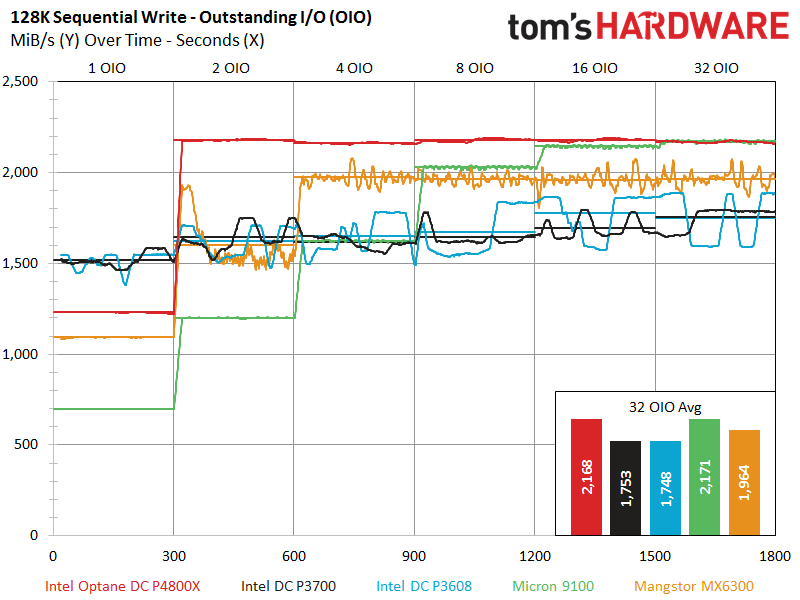

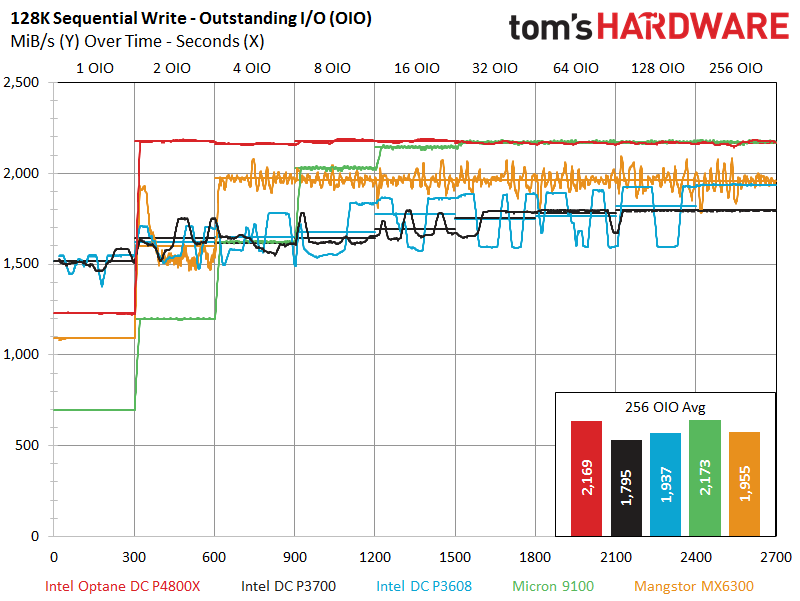
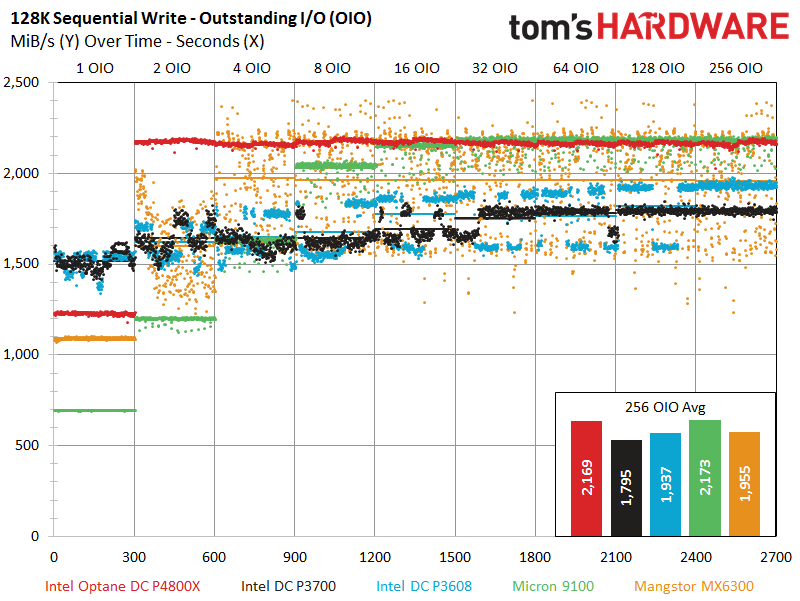
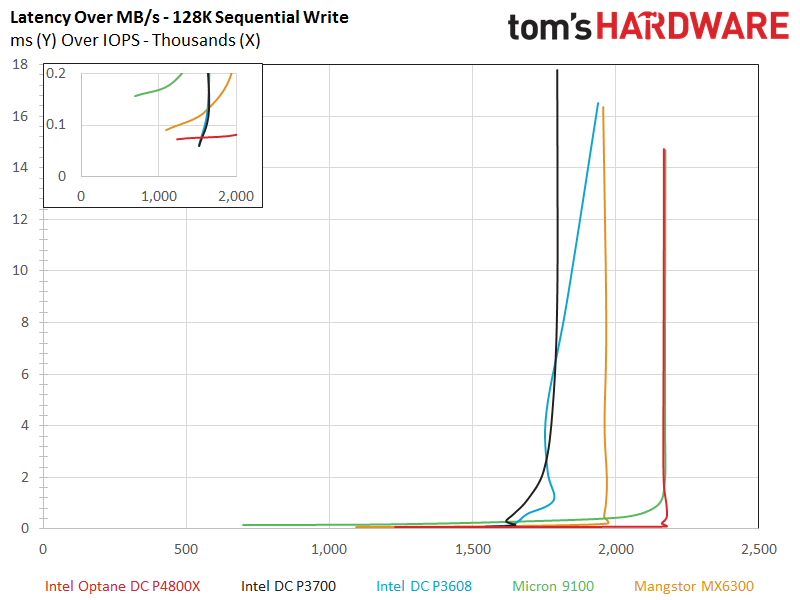



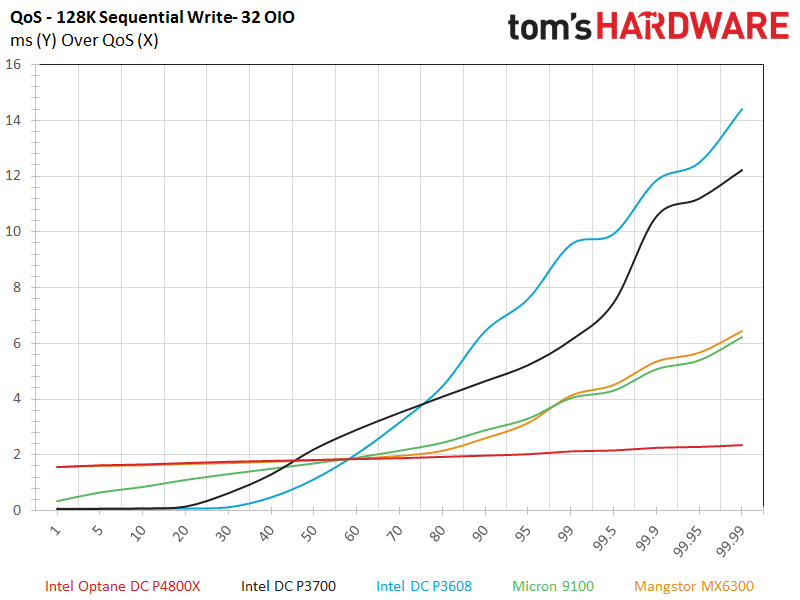
The DC P4800X falls behind the DC P3608 and DC P3700 at one OIO, but rights the ship and leads through 16 OIO. The P4800X and Micron 9100 both provide the best overall sequential write throughput under heavy load. The DC P4800X's consistent results are a clear differentiator though, as most of the competing SSDs suffer from somewhat erratic performance trends. This comes to light in our scatter charts, but really gets a spotlight when we look to the 99.99th percentile measurements. Interestingly, the final chart in the series shows the DC P4800X at a disadvantage in the first through fortieth percentile ranges. However, it doesn't deviate much through the span of percentile measurements.


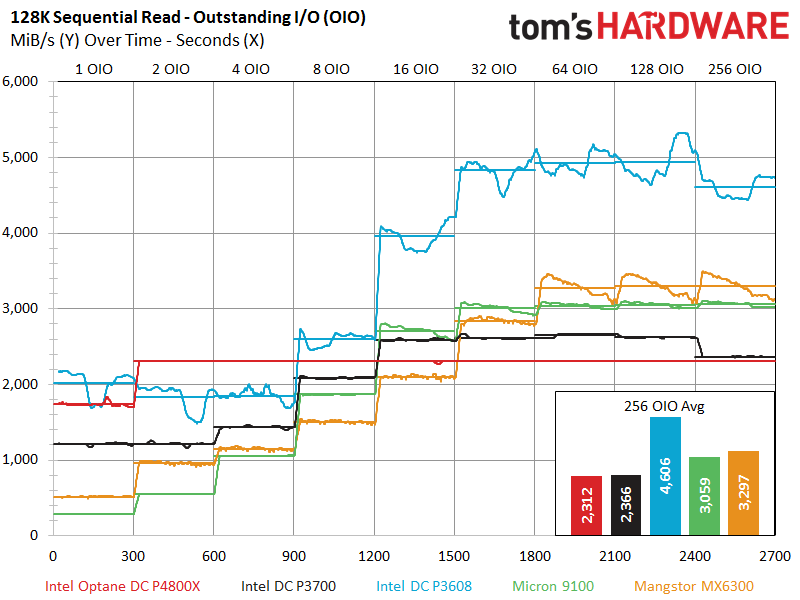


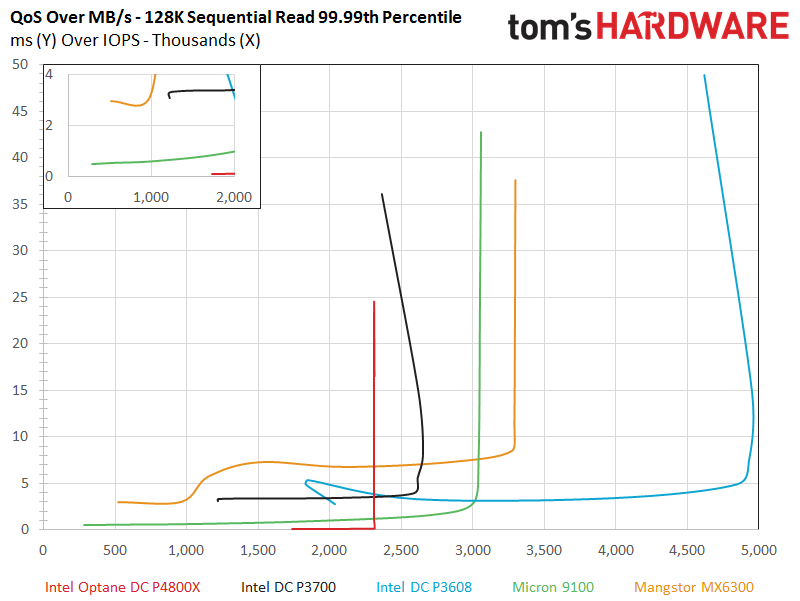
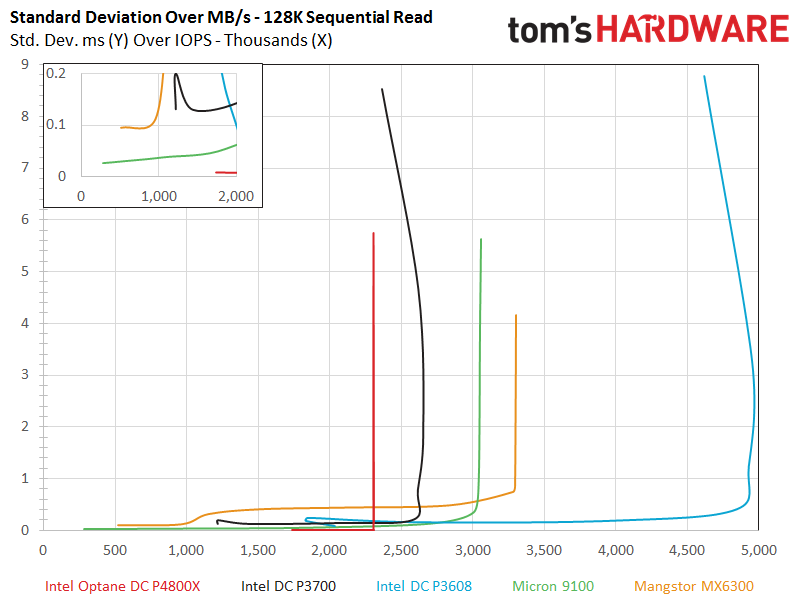

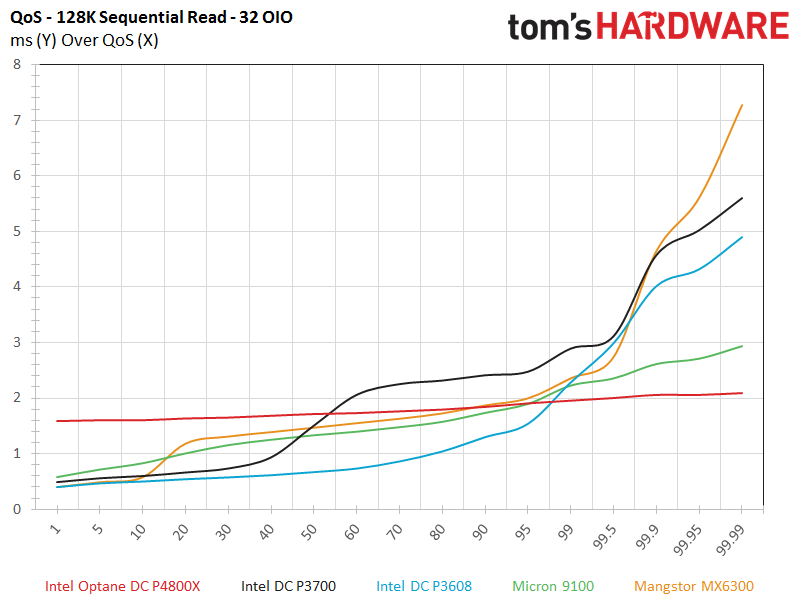
Sequential read workloads are another matter, at least in terms of overall throughput. Again, the DC P4800X takes the lead from two to four OIO, but the increased parallelism of heavier sequential workloads extracts peak performance from the NAND-based SSDs. The dual-headed DC P3608 is beastly during this test. But it can't offer the superb consistency and QoS of Intel's DC P4800X.
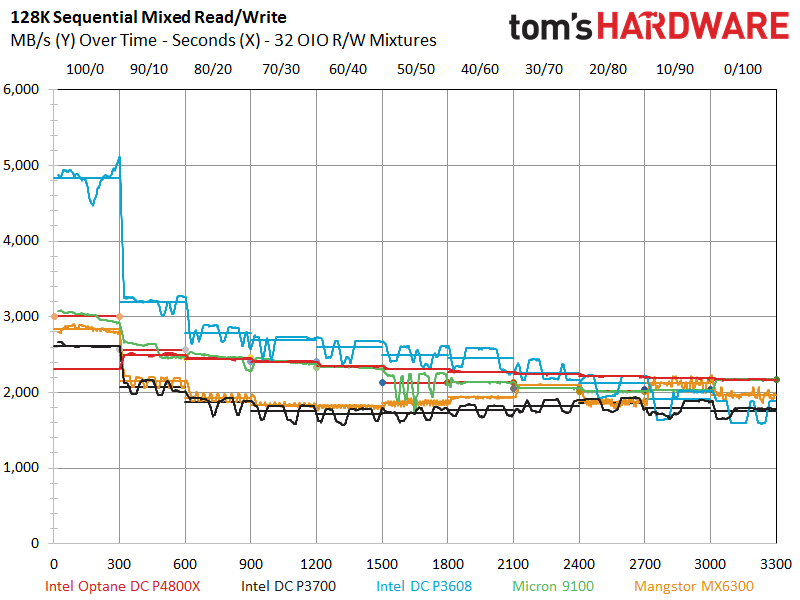

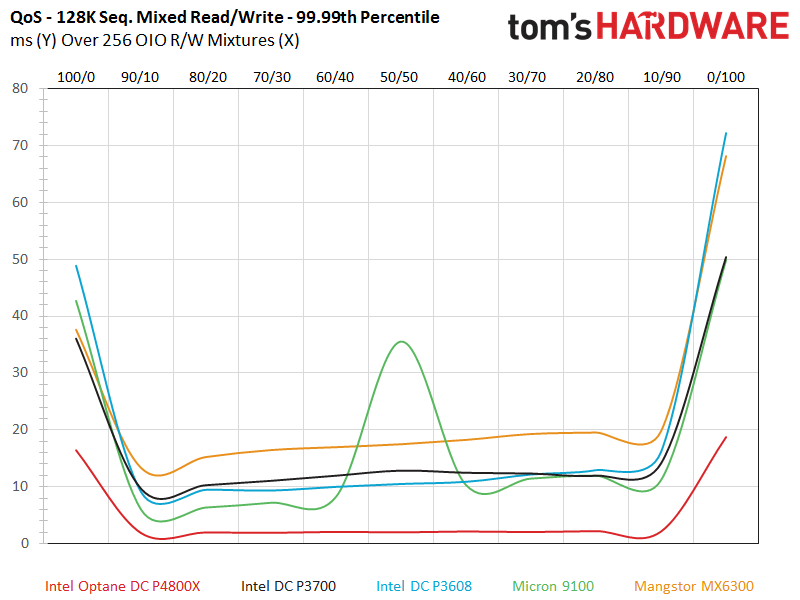
For once, our mixed sequential chart finds the DC P4800X losing the throughput battle. The DC P3608 owns the left side of the chart, while the DC P4800X ekes out a slim lead during the test's write-centric potion. A quick glance at the QoS chart indicates that the DC P3608's lead isn't quite as convincing, though.
MORE: Best Enterprise SSDs
MORE: How We Test Enterprise SSDs
Get Tom's Hardware's best news and in-depth reviews, straight to your inbox.
Current page: 128K Sequential Read & Write
Prev Page 8K Random Read & Write Next Page OLTP, File & Email Server Workloads
Paul Alcorn is the Editor-in-Chief for Tom's Hardware US. He also writes news and reviews on CPUs, storage, and enterprise hardware.
-
Geekwad A true signal that raw processing power is played out.Reply
Storage of all kinds and an increased focus on parallelism in software implementations is more exciting. -
anbello262 I can't wait to have the consumer version. I can cleary see in a few years ssd replacing hdd for storage, and xpoint replacing ssd for OS/boot/programs.Reply -
shrapnel_indie Call me when the testing is completed with real hardware on hand. Its too easy to simulate in a virtual environment. (Not saying they did, but the potential exists.) The numbers are nice though.Reply